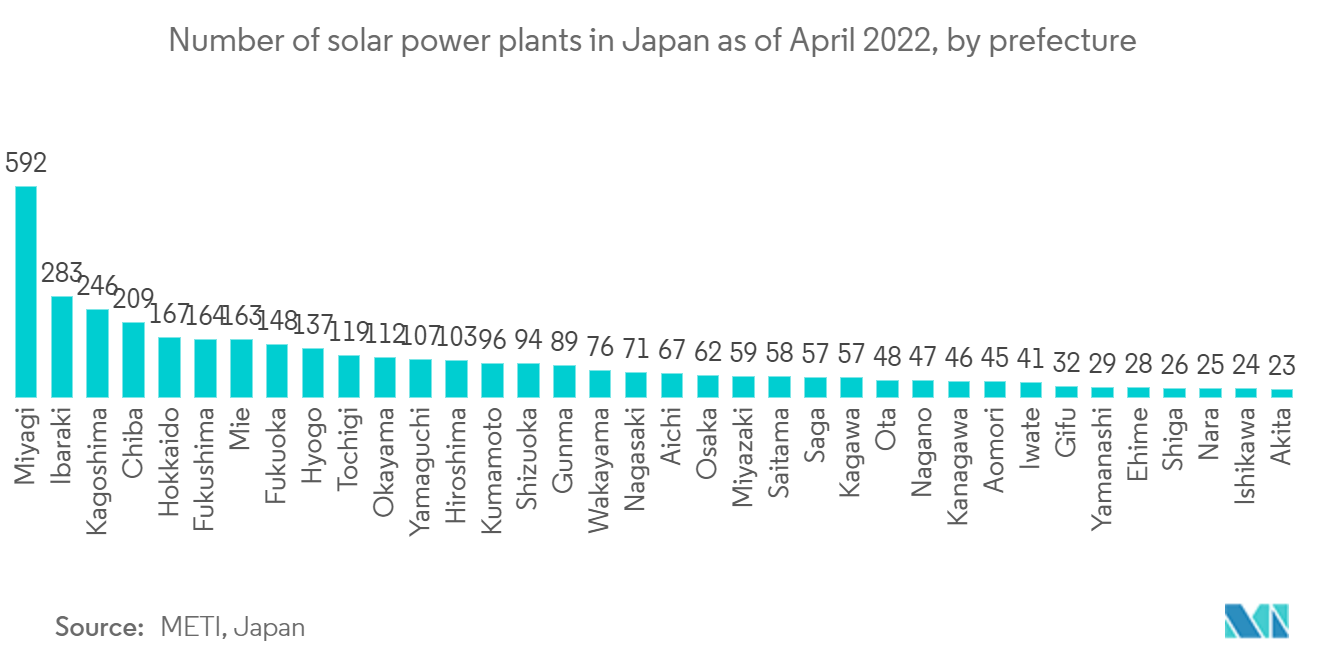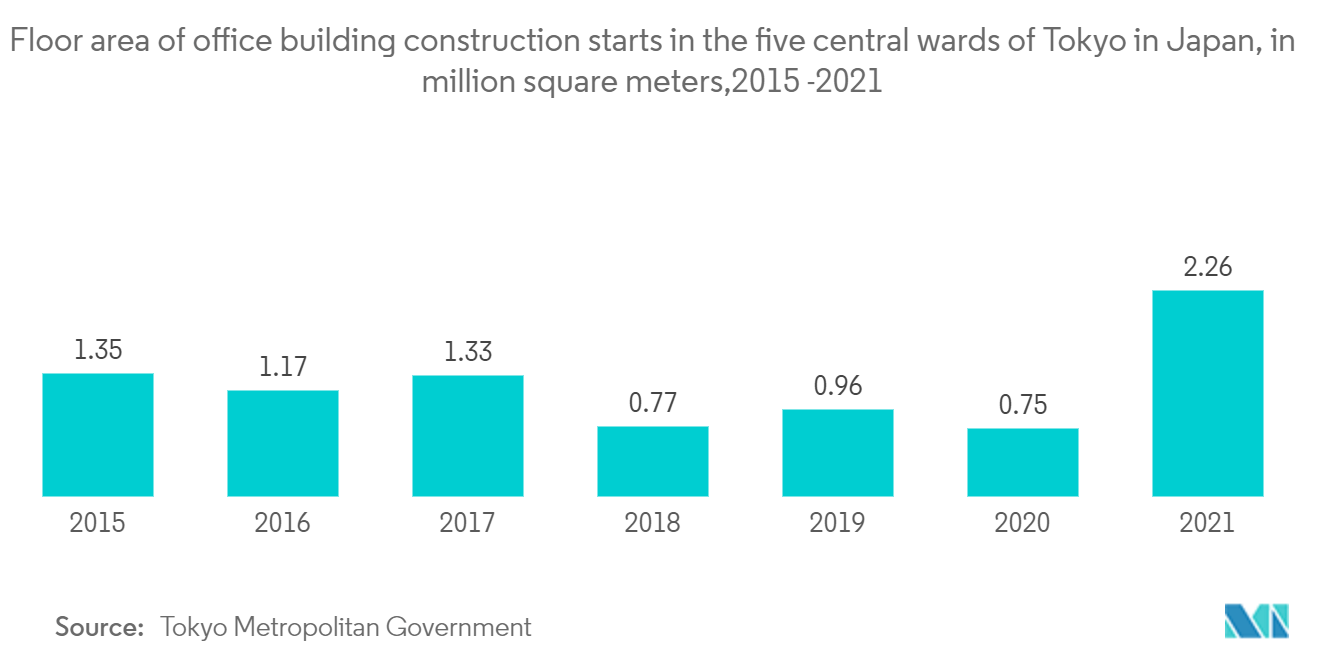Market Trends of Japan Commercial Construction Industry
This section covers the major market trends shaping the Japan Commercial Construction Market according to our research experts:
Government Mandates Pertaining to Energy Projects
Despite the Japanese government lowering the cost of solar power, the creation of solar power plants is still going on. Renewable energy projects, like those that use onshore wind and biomass, are all moving forward steadily.Four offshore wind power projects have been put up for bid, and more possible sites are soon to follow.
To reach its goal of 22% to 24% of all electricity in Japan being supplied by renewable energy, the government plans to introduce 1 million KW of offshore wind power projects in 2030 and 3 million to 45 million KW of wind projects in 2040. Investors and participants from around the world are paying heed to this.
There were 592 electric power sources using solar energy in Miyagi Prefecture as of April 2022. In total, Japan had over 3.9 thousand solar generating facilities. The majority of renewable electric power plants during the measurement era were located in Miyagi Prefecture, with solar power plants making up the majority of these facilities.

Respond To Demand For New Buildings and Infrastructure, especially in the Tokyo area, reflecting economic growth, urban planning and application of new technologies
Some of the major projects are as follows:
- A maglev bullet train called the Linear Motor Car Project is being considered to travel between Shinagawa Station in Tokyo and Shin-Osaka Station in Osaka. Passengers will be able to travel from Tokyo to Shin-Osaka in 67 minutes at the train's top speed of 505 kilometers per hour (314 mph). The project will be completed in two stages, the first of which will see the opening of a line between Shinagawa Station and Nagoya Station in 2027 and the second of which will see the opening of a line between Nagoya Station and Shin-Osaka Station in 2037. The entire project, including the Nagoya-Shin-Osaka leg, is expected to cost about JPY 9.3 trillion (USD 70.74 billion) to build. The Shinagawa-Nagoya leg is expected to cost about JPY 5.5 trillion (USD 41.9 billion) to build because of environmental concerns.
- Many parts of Tokyo, like Shibuya, Toranomon, and Shinagawa, are being redeveloped in time for the 2020 Olympics and Paralympics and to make Tokyo more competitive with other cities around the world. The tallest building in Japan will be finished in the Toranomon-Azabudai neighborhood in 2023 as part of these redevelopments, and in the Otemachi neighborhood in 2027, an even higher building will be constructed.
- Between Shin-Aomori Station in Aomori District on the island of Honshu and Sapporo Station on the island of Hokkaido, a distance of 361 kilometers, is being built as part of the Hokkaido Shinkansen (Shinkansen in Hokkaido Area). In March 2016, the first section was finished and put into use. The final 212 kilometers between Shin-Hakodate Hokuto Station and Sapporo Station are currently being built, and service is expected to begin in 2031.


